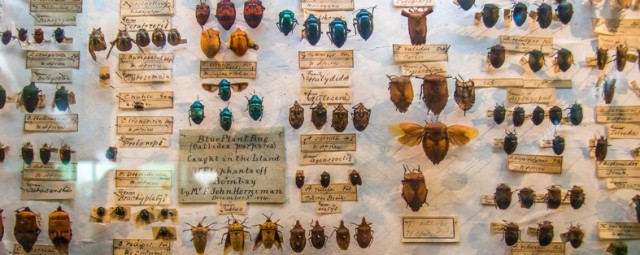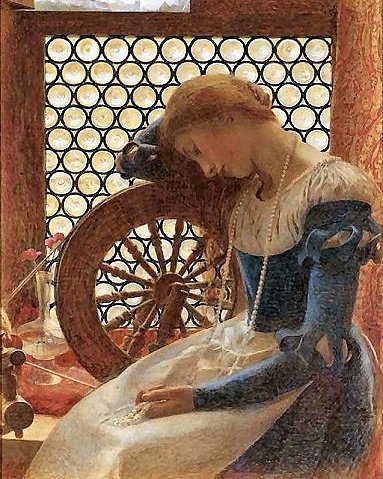This blog post is based on a talk I gave at the Inspiration Trust’s English Symposium last June, although it is edited somewhat for this post. My thanks again to Summer Turner and the Inspiration Trust for inviting me to speak.
I hope this post might be of some interest to English teachers if they’re teaching Romantic or Victorian literature, or just because it’s interesting! Following this post there will be another post in 2020 about Aestheticism and the Decadent Movement, a fascinating contrast to the Romantics’ relationship with the body and death. But that’s to come. For now, I’d like to explore the Romantics’ relationship with death. I’m going to attempt to explore the convergence between the body and the page (and the canvas) in Romantic poetry and explore the ways in which the body becomes an object suffused with emotion and information. I will also reference some Pre-Raphaelite art and a lied by Schubert. I have provided a short list of suggested further reading at the end of this post that might be useful.
Let’s make no bones about it: the Romantics were rock stars. They were pretty full-on. Maybe that’s why I like them. Having said that, had I known Shelley, Keats and the gang in real life I reckon I probably would have found them quite irritating (all that sighing and that BLOODY URN). It’s only the thankful distance of about 200 years that means I can read them and their writing as objects of interest. And I do find them particularly interesting. What I also find fascinating is their preoccupation with the body and death. Body parts formed a ghoulish tapestry for the Romantics (and the Victorians), woven with poems and stories and art and music and all sewn together with a huge narrative spool of death. And this cadaverous narrative tells us much their complex relationship with the afterlife.
There is a hazy period in the nineteenth century when Romanticism moved into the Victorian era. Victorian death culture, in particular, formed a narrative around the body. As Lutz argues, the dead body was seen as a sacred object by the Victorians, which moved away slightly from the individualism and emotionalism of the Romantics. Lutz explores how bodies leave traces of themselves and vestiges of memories on things that had been touched by the deceased: leavings of the self. She argues that, therefore, the cadaver became an artefact or relic to the Romantics and Victorians, and that these “corporeal tokens” stood in for the person as they were, whether literal (the remains of Percy Bysshe Shelley’s cremated heart that Mary Shelley carted about with her, wrapped in the leaves of his writing), or the literary (the decapitated head in Keats’ ‘Isabella’ (1820) or the body parts depicted in Goethe’s 1808 poem ‘Gretchen am Spinnrade’), but all suffused with meaning; the past made manifest, the dead resurrected. So I’d like to explore these text relics; the bodies and body parts that are so prevalent in the poetry of the Romantics. Death lingers in these text relics and presents itself again and again, like the frantic cyclical movement of Gretchen’s spinning wheel that we see in the words of Goethe and in the music of Schubert. Death becomes un-deathed, caught forever in the artistic mausoleum of the poem, to die and come to life perpetually.

Victorian jewellery with a dead loved one’s hair and photograph
Therefore, death in art in Romanticism became a collector’s item. And the Romantics fantasised about becoming a collector’s items themselves – almost saintly relics that travelled through time and space. Obsessed with the self (the Victorians seem to focus more on death of the other more than death of the self) and the “centrality of the individual”, this, argues Lutz, “led them to fix their eyes on posthumous fame, spurring them to carry the theme into their writing.” (p.25 – Lutz). Just look at the scattered fragments of Chatterton’s writing in Wallis’ The Death of Chatterton (1856) and the speaker in Shelley’s ‘Ode to the West Wind’ (1819); after death his precious words scattered leading to an even greater, miraculous spark amid mankind, “And, by the incantation of this verse,/Scatter, as from an extinguished hearth/Ashes and sparks, my words among mankind!”. Keats even had his own death mask; his body became a revered, sacred, miraculous object. Part of the preoccupation with the artist as a collector’s item, and death itself as a collector’s item, can be attributed to other socio and cultural changes after the Enlightenment: a desire to bring order to chaos: structure, classification, certainty. Collecting and classification became a hobby. Often very personal items were included – hair, ribbons, teeth – ‘death memories’ ordered and classified. Death objects gave a continuity of memory that seemed to overcome death itself. And sitting slightly awkwardly alongside this need for classification and order was the idea of a ‘beautiful death’ and a gothic attraction to fragments, ruin and decay, captured forever in the eternal moment.

Victorian collections and classification
This is exemplified beautifully in Keats’ ‘Ode to a Nightingale’. The nightingale becomes a captured death object within the poem itself. Although the nightingale is an “immortal Bird”, it makes us feel the longing of being alive and the pull of a beautiful death. Keats relentlessly makes us experience the fragility of life – forcing us to teeter on the edge of a symphony or a requiem; we’re “half in love with easeful death” and therefore half in love with life. Keats forces us to feel. He death-collects the senses in the poem with painfully exquisite attention to the body itself, and then the body in decay. His poetry both celebrates and mourns the ephemerality and fragility of life. Again, we are reminded of Wallis’ depiction of Chatterton, “Where youth grows pale, and spectre-thin, and dies” – “easeful death” is aestheticised. In Romantic poetry and art, there’s often a longing for capturing of the exact moment of death, so death becomes something permanent; the poem or the frame of the painting becomes the tomb (ref Lutz and “the formaldehyde of poetic language”, p.42). The poem, painting, or song becomes a travelling relic that travels through time and is brought to life again by the next reader, observer or listener.

The Death of Chatterton by Henry Wallis, 1856
Goethe’s poem ‘Gretchen am Spinnrade’ (Gretchen/Margaret at the spinning wheel) was written in 1808 and the words taken from Part 1 of Goethe’s Faust. It was set to music by Schubert in 1814 when Schubert was 17 years old. The lied depicts Gretchen (Margaret) at her spinning wheel, longing after Faust and all he has promised. The accompaniment represents the ever-constant spinning wheel – perhaps trying to root Gretchen in reality – or perhaps representing the cyclical, never-ending nature of her longing and lust for Faust. It’s an interesting poem to consider alongside other Romantic poems about death and the body, because here Goethe and Schubert seem to capture the never-ending death of unrequited love through linguistic glimpses of body parts. In this poem we see initially the materiality of life itself (which Gretchen compares to a grave): the window and the house – it’s almost like Gretchen wants to contain Faust within the house so the memory of the body becomes entombed within her memory and the song (and poem) itself. The materiality of the concrete nouns (“das Grab”, “zum Fenster” “aus dem Haus”) stand in for the absent body of Faust.
In Goethe’s poem there is a longing, an ache – similar to Keats’ “half in love with easeful Death” – and alongside this, the body, both Gretchen’s and the memory of Faust’s body – becomes fractured, fragmented, separated. Faust’s body becomes a sacred relic. Goethe presents us with a series of nouns that are body parts, moving from Gretchen’s to Faust’s:
Herz
Kopf
Sinn
Gang
Gestalt
Mundes
Augen
Rede
Zauberfluss
Händedruck
Kuss
Busen

Margaret (Alone at her Spinning Wheel) by Frank Cadogan Cowper, 1907
And after Gretchen’s memory of his kiss, she moves to verbs that try to stop the cruelty of loss and preserve the memory of Faust through the “formaldehyde of poetic language”: “fassen” “halten” “kussen” – enabling Gretchen to be able to forget, to suspend time and to die in the memory. The aching and the longing becomes art – and Schubert cradles and magnifies this with his music. The cyclical piano line (the spinning wheel itself) represents Gretchen’s yearning that never ends.
Franz Schubert’s Gretchen am Spinnrade, sung by Kiri Te Kanawa
This has only been a brief exploration of death in Romantic poetry. It’s such a fascinating period and the Romantic attraction to sacred remnants of the self and sacred secular objects opened the door to Victorian death culture, where the materiality of death and death objects (lockets of hair in necklaces; dead loved one’s ribbons as bookmarks; portraits; poems; photographs) meant that, somehow, the dead were still part of this world.
Gretchen am Spinnrade
By Johann Wolfgang von Goethe
Meine Ruh’ ist hin,
Mein Herz ist schwer,
Ich finde sie nimmer
Und nimmermehr.
Wo ich ihn nicht hab’
Ist mir das Grab,
Die ganze Welt
Ist mir vergällt.
Mein armer Kopf
Ist mir verrückt
Mein armer Sinn
Ist mir zerstückt.
Nach ihm nur schau’ ich
Zum Fenster hinaus,
Nach ihm nur geh’ ich
Aus dem Haus.
Sein hoher Gang,
Sein’ edle Gestalt,
Seines Mundes Lächeln,
Seiner Augen Gewalt.
Und seiner Rede
Zauberfluss.
Sein Händedruck,
Und ach, sein Kuss!
Mein Busen drängt sich
Nach ihm hin.
Ach dürft’ ich fassen
Und halten ihn.
Und küssen ihn
So wie ich wollt’
An seinen Küssen
Vergehen sollt’!
Gretchen at the spinning-wheel
English Translation © Richard Stokes
My peace is gone
My heart is heavy;
I shall never
Ever find peace again.
When he’s not with me,
Life’s like the grave;
The whole world
Is turned to gall.
My poor head
Is crazed,
My poor mind
Shattered.
My peace is gone
My heart is heavy;
I shall never
Ever find peace again.
It’s only for him
I gaze from the window,
It’s only for him
I leave the house.
His proud bearing
His noble form,
The smile on his lips,
The power of his eyes,
And the magic flow
Of his words,
The touch of his hand,
And ah, his kiss!
My peace is gone
My heart is heavy;
I shall never
Ever find peace again.
My bosom
Yearns for him.
Ah! if I could clasp
And hold him,
And kiss him
To my heart’s content,
And in his kisses
Perish!
Further reading:
Literary Remains: Representations of Death and Burial in Victorian England by Mary Elizabeth Hotz (State University of New York Press, 2009)
Relics of Death in Victorian Literature and Culture by Deborah Lutz (Cambridge University Press, 2015)
Second Sight: The Visionary Imagination in Late Victorian Literature by Catherine Maxwell (Manchester University Press, 2009)
